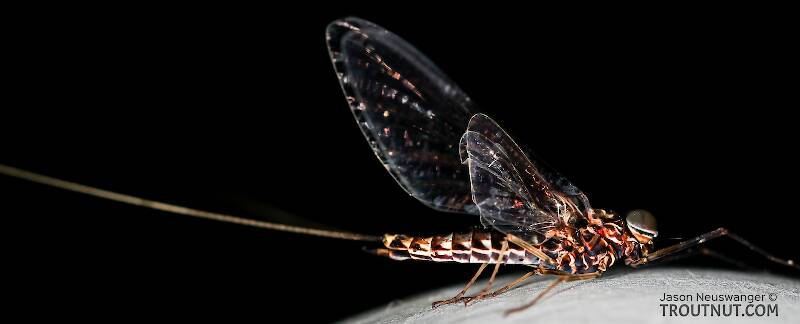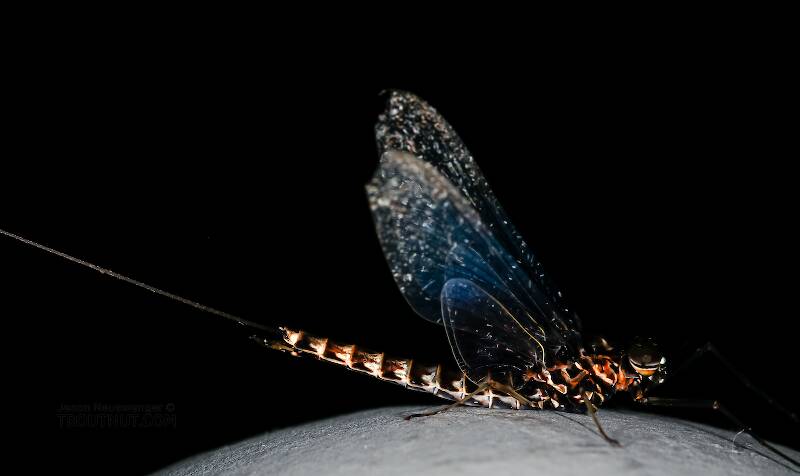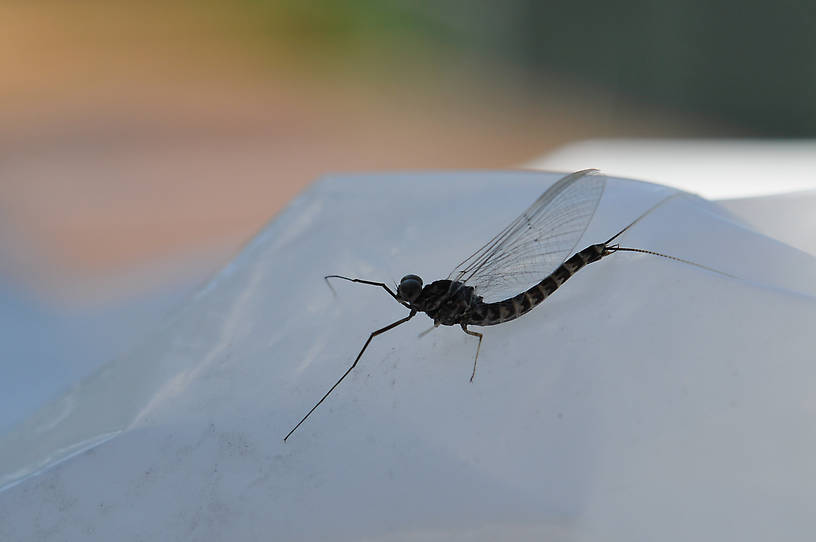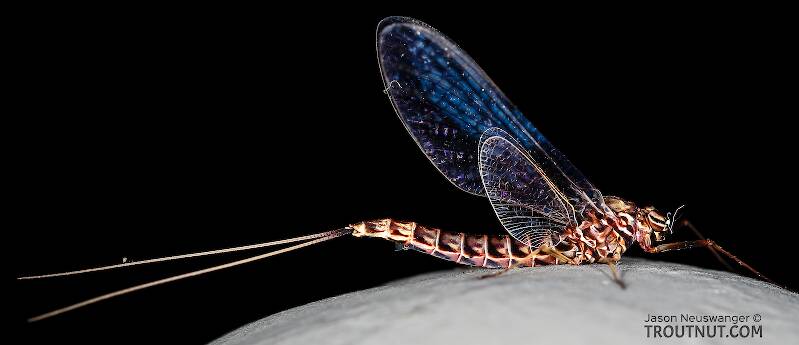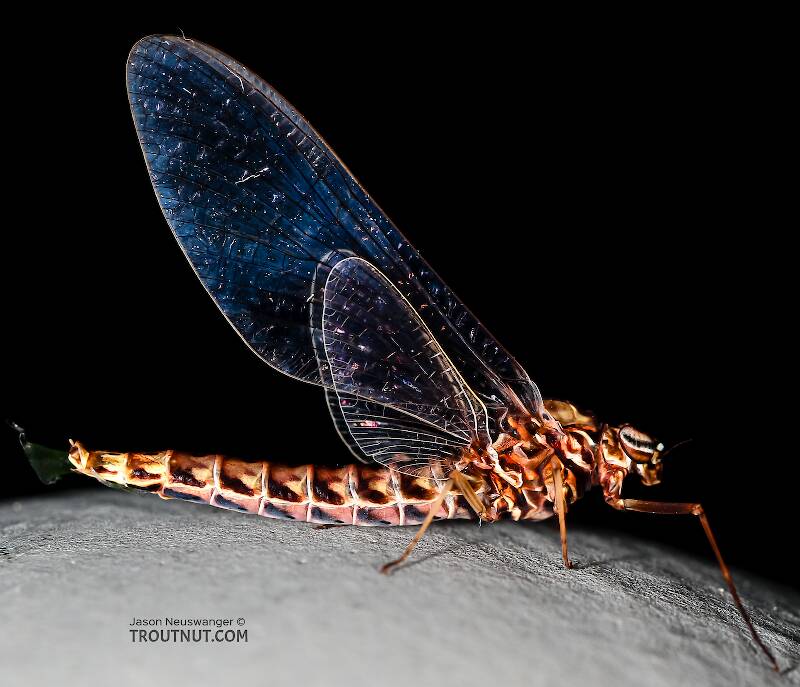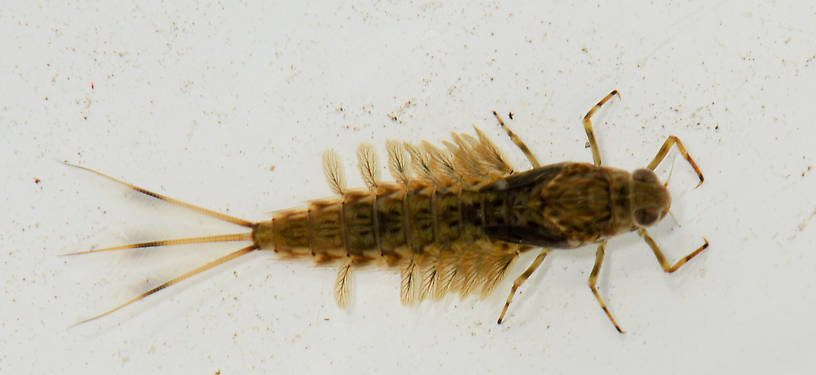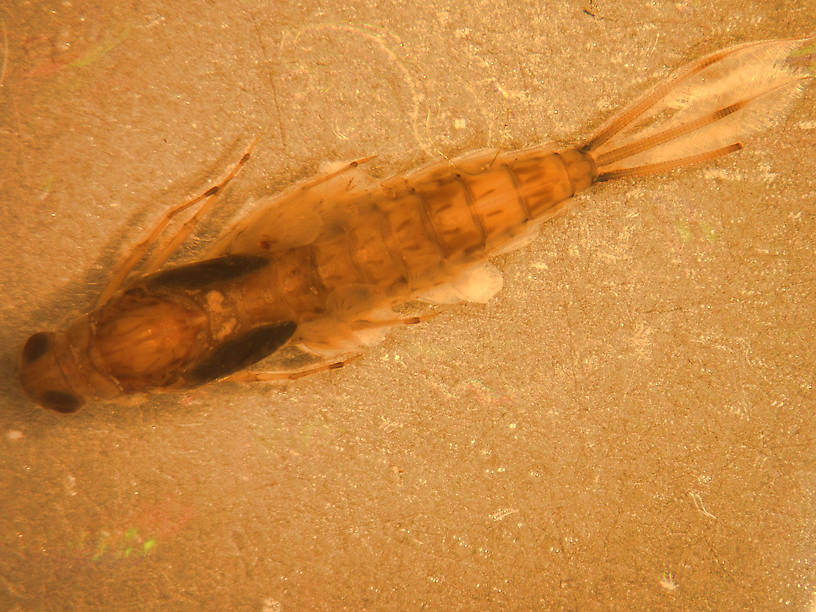
Blue-winged Olives
Baetis
Tiny Baetis mayflies are perhaps the most commonly encountered and imitated by anglers on all American trout streams due to their great abundance, widespread distribution, and trout-friendly emergence habits.


Mayfly Species Siphlonurus occidentalis (Gray Drakes)
Where & when
This species most abundant in the late summer and early fall when few other mayflies are on the water. Its activity may last few months in a single location. There's a good chart in Knopp and Cormier's Mayflies: An Angler's Study of Trout Water Ephemeroptera detailing where and when to find this species.In 39 records from GBIF, adults of this species have been collected during July (31%), June (28%), August (23%), May (10%), and April (8%).
In 37 records from GBIF, this species has been collected at elevations ranging from 740 to 11444 ft, with an average (median) of 6339 ft.
Species Range
Spinner behavior
Time of day: Mid-morning or evening
Physical description
Most physical descriptions on Troutnut are direct or slightly edited quotes from the original scientific sources describing or updating the species, although there may be errors in copying them to this website. Such descriptions aren't always definitive, because species often turn out to be more variable than the original describers observed. In some cases, only a single specimen was described! However, they are useful starting points.
Male Spinner
Wing length: 12-14 mm
A large brown species with conspicuous dark U-shaped marks ventrally.
Head yellowish brown. Thorax yellowish to reddish brown. Pronotum dark brown, grey laterally. Scutellum and lateral margin of mesonotum dark reddish brown; a yellow area anterior to scutellum, also to scutellum of metanotum. Antero-lateral portion of mesonotum and pleural sutures, yellowish, often with orange markings. White bands extend across the mesosterna and metasterna.
Fore leg dark reddish brown. Middle and hind legs yellow, the femora distinctly shaded with reddish brown; tips of tarsi brownish; joinings narrowly darker reddish brown. Wings hyaline, veins purplish black; the longitudinal veins heavier than the cross veins. A thickened area at the bulla, on the subcosta, radius and first division of the radial sector. Fore wing with a narrow brown shading at the base. Costal and subcostal cross veins pale. Stigmatic cross veins numerous, often forking near the costal margin.
Abdomen yellowish to yellowish brown, semi-hyaline in the pale areas, with reddish to purplish brown markings. All segments pale on the posterior margin. Median portion of each tergite yellowish brown; dark lateral triangles prominent, but confined to the postero-lateral angles and the lateral margin; dark oval spots conspicuous reddish brown. Apical tergites marked with yellow, often with powdery white areas. Ventrally, no dark lateral patches, but the oblique lines are broad and dark, united anteriorly to form a conspicuous U-mark on each sternite. Near the posterior margin a brown transverse line (may be crescentic) may almost or entirely unite the oblique dark bands. Two small dark dots usually present within the dark U-mark, anterior to the center.
Forceps base and forceps yellowish brown. Penes reddish brown (see fig. 122). Tails dark purplish brown at base, yellowish or whitish in middle and distal portions. Basal joinings faintly darker than segments.
Female Spinner
Wing length: 14 mm
A large dark species, occurring late in the summer; known only from the female imago.
Head dull purplish on frontal portion, vertex dull yellow, with usual dark median streak. Thorax dull brown with blackish shading. Scutellum blackish, shaded with orange; antero-lateral portions of mesonotum with pale yellowish markings. Pleural sutures yellowish. Anterior portion of mesosternum pale yellowish, crossed by a purplish band; lateral yellow shading on posterior portion. Metasternum pale yellowish.
Legs dull yellowish, shaded rather heavily with purplish; fore tarsi deep smoky, others less dark. Wing hyaline, veins dark. Costal cross veins faint before the bulla. Stigmatic area with a faint purple tinge; cross veins weakly anastomosed.
Abdomen purplish brown dorsally; anterior triangles yellowish, rather extensive. Ventrally pale yellowish. Oblique bands broad, purplish black in color, and joined anteriorly to form U-shaped marks on sternites 1-6; two small black dots between the U-marks, on these segments. Posterior margin of sternite 7 broadly purplish black; only a pale oval central portion remains, surrounded by dark margins. Sternite 8 with a large rounded bulge, pale yellowish in color, bordered anteriorly and laterally by black stripes. A pale stripe extends backward from it to the posterior margin. Sternite 9 largely purplish black, with a narrow triangular median pale area. Tails blackish, somewhat paler distally.
Nymph
The nymph of this species has double gills on segments 1 and 2 only. The legs are banded. The tails are dark-tipped, but not crossed by a median dark band.
Specimens of the Mayfly Species Siphlonurus occidentalis
1 Female Dun
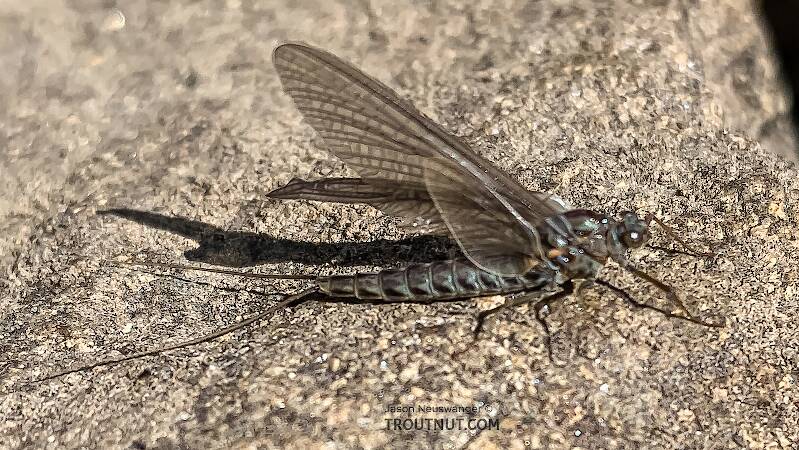
3 Male Spinners
2 Female Spinners
2 Nymphs
Start a Discussion of Siphlonurus occidentalis
References
- Arbona, Fred Jr. 1989. Mayflies, the Angler, and the Trout. Nick Lyons Books.
- Caucci, Al and Nastasi, Bob. 2004. Hatches II. The Lyons Press.
- Knopp, Malcolm and Robert Cormier. 1997. Mayflies: An Angler's Study of Trout Water Ephemeroptera . The Lyons Press.
- Needham, James G., Jay R. Traver, and Yin-Chi Hsu. 1935. The Biology of Mayflies. Comstock Publishing Company, Inc.
- Schwiebert, Ernest G. 1955. Matching the Hatch. MacMillan Publishing Company.
- Swisher, Doug and Carl Richards. 2000. Selective Trout. The Lyons Press.
Mayfly Species Siphlonurus occidentalis (Gray Drakes)
Species Range
Common Names
Resources
- NatureServe
- Integrated Taxonomic Information System
- Global Biodiversity Information Facility
- Described by Eaton (1885)


